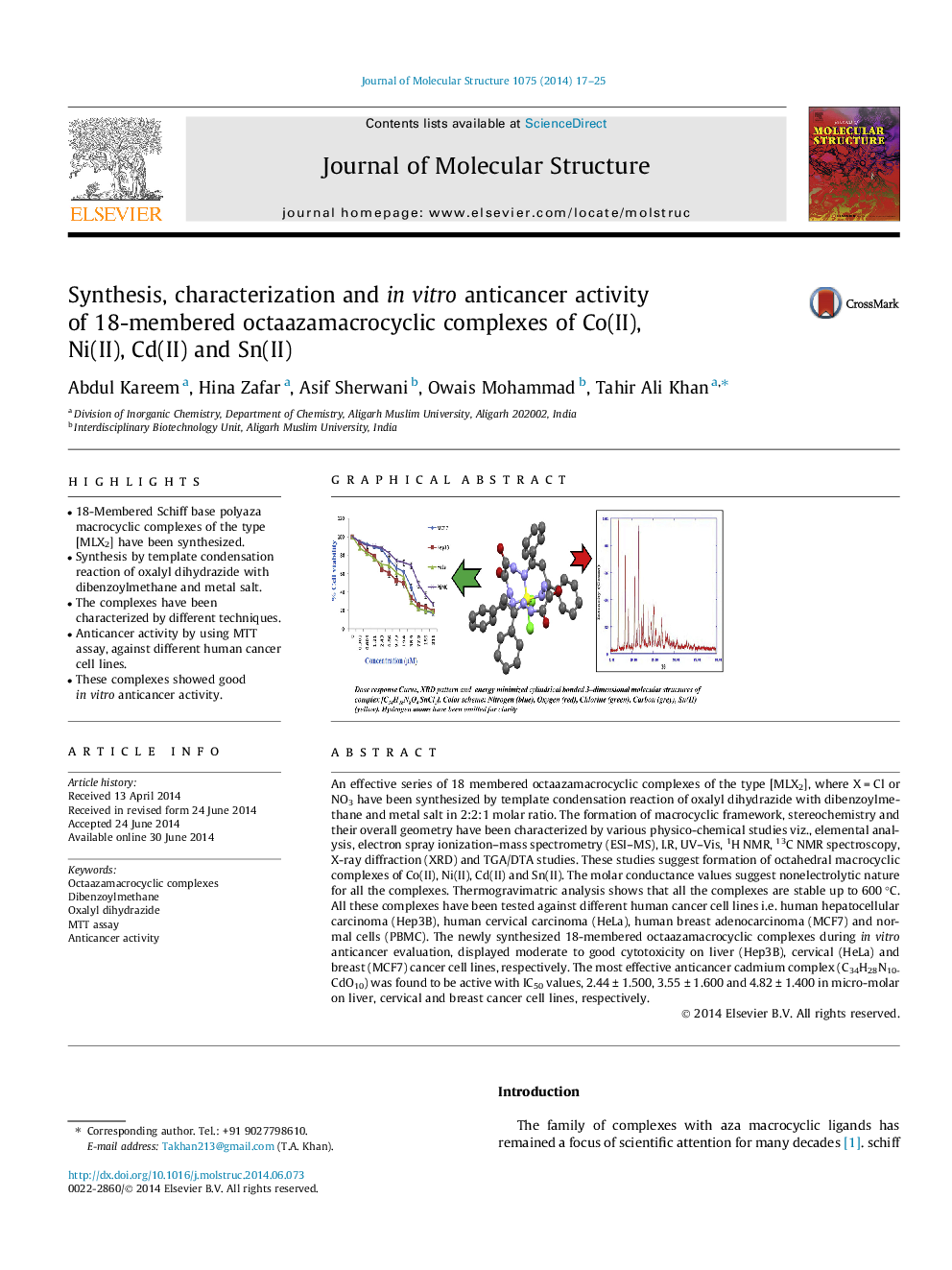| کد مقاله | کد نشریه | سال انتشار | مقاله انگلیسی | نسخه تمام متن |
|---|---|---|---|---|
| 1402262 | 1501742 | 2014 | 9 صفحه PDF | دانلود رایگان |

• 18-Membered Schiff base polyaza macrocyclic complexes of the type [MLX2] have been synthesized.
• Synthesis by template condensation reaction of oxalyl dihydrazide with dibenzoylmethane and metal salt.
• The complexes have been characterized by different techniques.
• Anticancer activity by using MTT assay, against different human cancer cell lines.
• These complexes showed good in vitro anticancer activity.
An effective series of 18 membered octaazamacrocyclic complexes of the type [MLX2], where X = Cl or NO3 have been synthesized by template condensation reaction of oxalyl dihydrazide with dibenzoylmethane and metal salt in 2:2:1 molar ratio. The formation of macrocyclic framework, stereochemistry and their overall geometry have been characterized by various physico-chemical studies viz., elemental analysis, electron spray ionization–mass spectrometry (ESI–MS), I.R, UV–Vis, 1H NMR, 13C NMR spectroscopy, X-ray diffraction (XRD) and TGA/DTA studies. These studies suggest formation of octahedral macrocyclic complexes of Co(II), Ni(II), Cd(II) and Sn(II). The molar conductance values suggest nonelectrolytic nature for all the complexes. Thermogravimatric analysis shows that all the complexes are stable up to 600 °C. All these complexes have been tested against different human cancer cell lines i.e. human hepatocellular carcinoma (Hep3B), human cervical carcinoma (HeLa), human breast adenocarcinoma (MCF7) and normal cells (PBMC). The newly synthesized 18-membered octaazamacrocyclic complexes during in vitro anticancer evaluation, displayed moderate to good cytotoxicity on liver (Hep3B), cervical (HeLa) and breast (MCF7) cancer cell lines, respectively. The most effective anticancer cadmium complex (C34H28N10CdO10) was found to be active with IC50 values, 2.44 ± 1.500, 3.55 ± 1.600 and 4.82 ± 1.400 in micro-molar on liver, cervical and breast cancer cell lines, respectively.
Figure optionsDownload as PowerPoint slide
Journal: Journal of Molecular Structure - Volume 1075, 5 October 2014, Pages 17–25